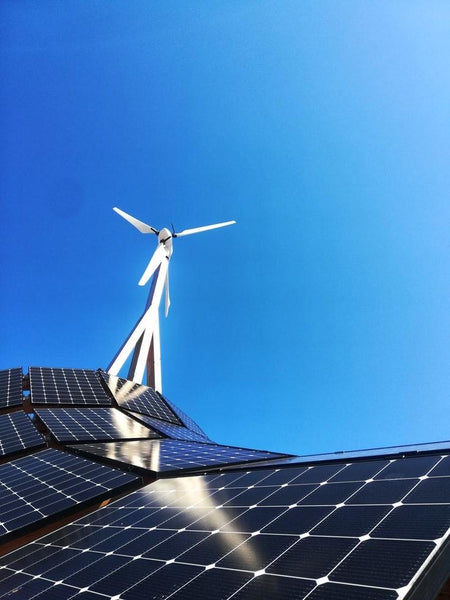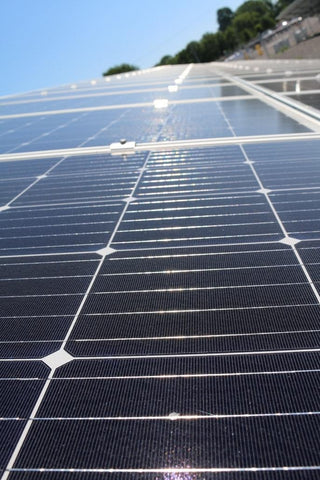
Tips for Choosing the Best Portable Solar Panel for Camping
Tips for Choosing the Best Portable Solar Panel for Camping
In today's technology-dependent environment, even camping is more enjoyable with the addition of portable solar panels. However, some parameters separate camping solar panels from those better suited as residential solar panels or the portable solar panels seen mounted on recreational vehicles. The following text will explore what you need to know to harness the power of the sun using off-grid solar power for camping and provide simple, off-the-shelf solutions to power your electronic devices.
What is a solar panel?
Solar panels, also known as photovoltaic (PV) panels, harness the sun's power by transforming solar radiation into electricity. It all starts with a small photovoltaic (PV) cell that is smaller than a playing card and about the same thickness. Each of these small cells acts as a semiconductor, meaning it is made of material that is less electrically conductive than metal but more conductive than an insulator to absorb sunlight that excites the electrons within. These excited electrons transfer their energy as electrical current to the grid of wires that ties all the PV cells together inside the PV panel. Since each PV cell can only generate one to two watts of electricity on its own, solar panel designers use as many cells as they need to create PV panels capable of generating from only a few watts to hundreds of watts.

Solar panels are available in different sizes and materials used to protect the PV cells. Some solar panels are flexible, and others are rigid. Flexible panels are desirable in some applications where flat space is limited but rigid panels are more durable and typically easier to mount on a permanent structure or a portable base.
Another option when choosing a solar panel is its crystalline structure, monocrystalline or polycrystalline. Most PV cells employ crystalline silicon as the semiconductor material for generating electricity. Polycrystalline cells are made from multiple crystals, and, as the name implies, monocrystalline cells are made from one crystalline structure. Monocrystalline solar panels are more efficient than polycrystalline panels because the excited electrons have an easier path to transfer their electrical energy into the panel's grid system through the single-crystal structure.
How does a solar panel work?
We have already covered the science of the inner workings of a solar panel, but how do they work? Solar panels produce electricity. The amount of electricity they make depends on their designed production capability and the amount of direct sunlight they are exposed to. In perfect conditions, a 200-watt solar panel will produce up to 200 watts, but a passing cloud, shade from a tree (even on a small portion of the solar panel), or snow build-up can decrease the electrical output of the solar panel. In addition to watts, voltage is also an essential part of any electrical system that can vary depending on the solar panel's performance.

Solar panels pass the electricity they generate through electrical cables into the rest of the solar system installation. Depending on the system's design, the electricity will pass through a controller to regulate the voltage, then either charge a battery bank or be introduced to the electrical grid for consumer usage. Therefore, it is essential to remember that when someone talks about powering their off-grid cabin or RV with solar, they refer to their entire solar system installation and not just solar panels.
What are the benefits of having a portable solar panel for camping?
Off-grid
According to Energy.gov, "the amount of sunlight that strikes the earth's surface in an hour and a half is enough to handle the entire world's energy consumption for a full year." In addition, a portable solar panel allows people with electronic devices to camp in places that do not offer electric service by capturing a tiny fraction of the sun's energy. Some of these off-grid campsites are in the most pristine areas of the world, in places that few people go much less experience after dark.
Portability
One of the significant advantages of portable solar panels is the ability to move them around to avoid shading from trees throughout the day. If any part of a solar panel is shaded, the charging capability of the entire panel is compromised. This could result in the inability to charge batteries or devices. The ability to camp with electricity in areas inaccessible by car is another advantage of portable solar panels.
Convenience
Without a portable solar panel for camping, it is necessary to carry enough batteries to satisfy the electrical needs of all the campers in your party. Adding a portable solar panel allows you to recharge a solar generator or battery power-pack that is capable of supplying enough energy to power electronic devices until the sun returns.
Security
Many people are reluctant to go camping due to the fear of being isolated. Our ancestors relied on an all-night campfire to produce light and warmth against the dark cold of night. In some cases, the modern addition or replacement to the campfire is electricity and the light and warmth it provides. The ability to charge a cell phone or listen to the radio is also a comfort that may make it easier to introduce new people to camping.

How to choose the best portable solar panel
Portable
When choosing a portable solar panel, it is crucial to pick one that is truly portable. Solar panels that are difficult to lift, do not fit in your vehicle, or are hard to set up at a campsite will most likely be left at home after the first few difficult experiences. In addition, the portable solar panel must produce enough electricity to charge enough battery capacity to power all the devices needed or desired at the campsite. Finally, there may only be a few hours of available sunlight in areas with abundant shade in any one location.

Efficient
Ace Volt offers a compact portable 200-watt solar panel for camping, measuring 24.4 inches long by 21 inches wide and weighing a mere 17 pounds, making it easy to transport and carry around the campsite for optimal placement. In addition to the Ace Volt solar panel's highly portable size and weight, it employs a monocrystalline crystal structure making it very efficient and durable.
Simple set-up
When deployed on the included stands, the Ace Volt 200-watt portable solar panel expands to 92 inches in length, creating a large solar panel for gathering the sun's rays. The easy one-person set-up requires no tools and only takes a few minutes. Once deployed the Ace Volt 200-watt portable solar panel begins to produce electricity immediately.
What does a complete portable solar system for camping require?
In addition to a portable solar panel, a solar system designed for camping should include a battery bank and a method of controlling the electricity coming from the solar panel. While it is possible to build a system based on a deep cycle battery and various solar control components, the easiest and often most economical way to power your off-grid camping adventures using a portable solar panel is to purchase a solar-powered generator.

The Ace Volt 700 Portable Power Station is an excellent choice for solar-powered off-grid camping. Its compact dimensions of 14.1 inches by 8.4 inches by 11.6 inches and lightweight 22 pounds make it the perfect companion to the Ace Volt portable 200-watt solar panel. In addition, the Ace Volt 700 utilizes LiFePO4 battery technology. LIFePO4 batteries are universally accepted as the best battery type in applications requiring ample energy storage in a small, lightweight package. With a storage capacity of 672 watt-hours, the Ace Volt 700 will quickly charge cell phones and hand-held games while providing power to the radio as it plays your favorite tunes or news broadcast. In addition to USB-A and USB-C ports, the AceVolt 700 also includes four 110-volt AC outlets to power coffee makers, televisions, or charge laptop computers.
Charging the AceVolt 700 from a standard 110-volt AC wall is accomplished in as little as three hours, and plugging it into a car's 12-volt port could take seven to eight hours. We suggest pairing the portable power station with the Ace Volt 200-watt portable solar panel to charge using four hours of free sunlight for optimal portability and autonomous power. And all components are backed by a three-year warranty and eligible for free shipping to your door.
Related Product























Leave a comment